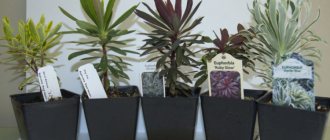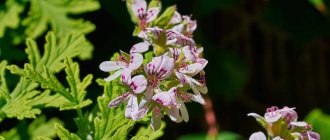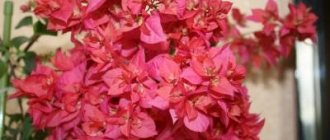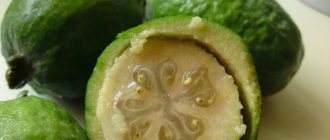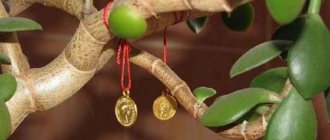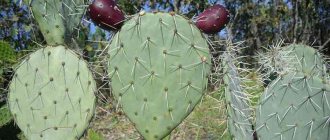Encyclopedia of Succulents
Lately, succulents have become particularly popular as indoor flowers. Plants are distinguished by unique properties, ease of care, and attractive appearance. A wide variety of varieties allows you to choose the most interesting and original options, depending on your own preferences. In this article, the Stapelia flower will be on display, which is distinguished by its incredibly beautiful flower and miniature shape. We invite you to take a closer look at the genus of this crop, its characteristics and secrets of cultivation.
- 1 Botanical description of succulents of the genus Stapelia
- 2 Stapelia flower: care at home 2.1 Common problems when growing
- 2.2 Reproduction of Stapelia at home
Description of types of slipways and reviews of the plant
The genus Stapelia unites more than fifty species of stem succulents growing in the semi-deserts of Africa. The most striking and memorable generic characteristic of these plants is the huge five-petaled flowers, which emit an extremely unpleasant odor. The fact is that under natural conditions, the slipway does not have any pollinators other than blow flies.
Therefore, the plant can only adapt, imitating the smell of decaying meat. Despite this property, slipways are one of the most popular succulents today.
Collectors are willing to put up with an unpleasant smell in order to admire an unusual flower:
“For the sake of such flowers, I am ready to forgive my slipway this disgusting amber. It bloomed for me in May, when it was already warm enough to take it out onto the loggia. The flowers look like huge furry starfish, they open one by one - one fades, the next one opens. The opening of the bud lasts literally a few minutes, as if in fast motion. The spectacle is fantastic!” (Lyudmila, Naro-Fominsk).
In indoor culture, you can most often find several types of slips with varying degrees of odor intensity:
| View | Characteristics of the bush | Characteristics of the flower | Odor intensity |
| Stapelia grandiflora (S. grandiflora) | The shoots are low, up to 20 cm, dark green, tetrahedral, with sparse prickly teeth. | The flowers are about 15 cm in diameter. They have 5 large pointed petals, heavily pubescent, and bend back as they bloom. The hairs are short, and the petals have a pattern imitating the skin of an animal. The color is burgundy, turning brown as the flower ages. | Moderate to strong. Intensifies when touching the flower. |
| Stapelia glanduliflora (S. glanduliflora) | The shoots are low, up to 15 cm, pale green, tetrahedral, with sharp teeth. | Flowers on long drooping stalks are pale green. They are medium-sized in diameter, up to 5 cm. They have 5 greenish-yellow petals with reddish strokes, completely covered with long white glandular fibers. | Moderate |
| Stapelia variable (S. mutabilis) | Shoots up to 15 cm long, tetrahedral, dark green, with strong sharp teeth directed upward. | The flowers are large, up to 12 cm in diameter. The petals are not completely separated; in the center of the open flower there is a noticeable crown in the form of a round ridge surrounding the pistil and stamens. The color is pale pink, with a “meaty” pattern in the form of dark strokes imitating meat fibers. Pubescence - along the edges of the petals, burgundy. | Strong |
| Giant stapelia (S. gigantea) | Shoots up to 30 cm long, tetrahedral, bright green, with frequent non-thorny teeth. | The flowers are very large, can reach 30 cm in diameter. The petals are very pointed, forming a corolla in the shape of an open bell. The color is pale yellow, with a pattern in the form of burgundy strokes. The pubescence is weak, light, the length of the villi increases along the edges of the petals. | Weak |
The growing popularity of slipways stimulates breeding work aimed at breeding cultivars with a less pronounced unpleasant odor.
In addition, sometimes you can find on sale the natural species Stapelia flavopurpurea (golden-purple stapelia), the small bright yellow flowers of which exude a quite pleasant aroma of beeswax.
When in bloom, slipway flowers resemble a starfish, the resemblance to which is enhanced by the presence of fibers on the petals. However, getting these plants to bloom is not easy, and many gardeners have been growing stapelias for years as a regular leafless succulent like aloe.
Caring for slipways at home
Types of dracaena: photos with names and descriptions, care at home
Lighting
Stapelia is photophilous; it needs bright, but mostly diffused light. Windows facing east or west are best suited for its maintenance. On the south side, in a sunny summer, the slipway will need to be shaded: prolonged intense illumination by direct sunlight leaves burns on its stems.
Temperature
In summer, the optimal temperature is 22-26 degrees. At this time of year, it is very useful to take the plant out onto the balcony, making sure that raindrops do not fall on it.
The spring and autumn seasons are a time of rest, and for winter time the best temperature will be from 12 to 16 degrees.
Soil and planting
The most suitable soil is with a high sand content. You can add crushed charcoal to the prepared soil for cacti, or mix washed river sand with turf soil in a 1:2 ratio.
For planting, it is better to choose a shallow container: the root system does not grow much. A layer of small pebbles or expanded clay should be poured onto the bottom. This drainage fills a third of the pot.
After planting, the plant is not watered for several days.
Watering
Excess moisture is the main danger for the African guest. The flooded plant is affected by fungi and rots. Therefore, the main commandment when watering is moderation.
In the spring, when growth begins, and in the summer, during the development of new shoots and flowering, the slipway is regularly, but not too abundantly, watered over the dried top layer of soil.
In autumn, the frequency and volume of watering is reduced to twice a month, and in winter, if coolness is ensured, the soil is watered extremely rarely, once a month or less - only so that the shoots do not wrinkle. If the winter is warm, you will have to water a little more often.
The slipway does not require humid air; it perfectly tolerates the dry atmosphere of city apartments with central heating.
Top dressing
The best fertilizer is a special complex mixture for cacti. Feeding is needed only during the period of growth and flowering - in spring and summer, twice a month. You can also use complex fertilizers for home floriculture, but these additives must be highly diluted: the solution is prepared two to three times weaker than for ordinary plants. The addition of potassium is very useful - it increases resistance to rot.
Excess nitrogen fertilizers are harmful to slipways.
Bloom
Blooms in summer; The time of one “wave” of flowering is usually two weeks. Viable specimens with young shoots, which have been provided with a cool winter, bloom annually up to 2-3 times a season.
Stapelia can shed existing flowers and buds if it is rearranged or rotated. The rest of the time, outside the period of flowering and budding, it is recommended to rotate the pot so that the stems grow more evenly and do not bend too much in the direction of maximum illumination.
To ensure the flowering of the slipway, it is necessary to follow the key rules of maintenance: sufficient, bright, diffused lighting; loose soil with a high sand content; dry, cool winter; reduced nitrogen content in fertilizers.
Smell
The exotic beauty of the flowers is combined with a disgusting smell. The whole gamut of aromas of spoilage and rotting is present here: from decaying meat to rotten fish. The only exception is golden-purple stapelia, which has a waxy aroma.
Fortunately, flowering occurs in the summer and a living bouquet of monstrous “stars”, to its benefit and the relief of the gardener, can (and should) be placed on the balcony. Pollinating flies, attracted by the enchanting smell, will not hesitate to appear.
Growth and transplantation
Branching occurs from the base of the stems and growth proceeds in breadth; as a result, older stems cluster in the center. Such a structure lives for several decades. Considering that only young shoots bloom, the central part of an overgrown colony of stems needs to be rejuvenated by cutting old shoots into cuttings.
Only young plants need annual replanting. As they age, they will need to be replanted every 2-3 years; for older ones, you can only replace the top layer of soil with fresh soil.
The transplanted specimens are not watered for several days: this precaution is due to the fact that the roots damaged during transplantation are highly vulnerable to fungal infections and can rot in conditions of excess humidity. The root system needs to be given time to recover.
What does stapelia look like: description of the plant
Stapelia belongs to the Kutrov family, which is a type of succulent. This is a tropical species, found naturally in the southern latitudes of Africa.
Stapelia gigantea
A perennial bush with tetrahedral fleshy shoots reaches a height of 60 cm. Soft thin shoots are located on the ribs of the stems. The color of the crown is dark purple; due to the lack of leaves, the flower is sometimes confused with a cactus.
Large five-pointed flowers up to 30 cm in diameter bloom at the tops of the peduncles. During flowering, the slipway emits an unpleasant odor that attracts insects.
Interesting! In the wild, the plant is found only on the African continent.
Types of slipway with photos and names
Stapelia asterias
This low-growing plant reaches only 20 centimeters in height. The stems are most often colored green, but can also be light red, and have small teeth on their blunt edges. On the surface of the brown-red flowers there are thin stripes of yellow color, as well as pale pink thick hairs. The flowers are on long stalks at the base of young shoots. This species has a variety - stapelia shiny: it does not have yellow stripes on the surface of the flowers.
Giant slipway (Stapelia gigantea)
This succulent is a perennial plant with powerful, erect stems reaching 20 centimeters in height and 3 centimeters in diameter. The shoots have blunt edges and a small number of small teeth. The flowers are very large, they can reach about 35 centimeters in diameter. They are located on long stalks and have elongated, pointed, slightly bent yellowish triangular petals, on their surface there are thick red hairs, and along the edge there are long white fibers. The smell of such flowers is not as unpleasant as that of other types of slipway.
Stapelia variegata (Stapelia variegata)
The height of such a low-growing plant is only 10 centimeters. The stems are most often green, but they are also pale red, with denticles on their blunt edges. One or up to 5 flowers can be placed at the base of young stems. The yellow petals have an ovoid shape, pointed at the tips. Their outer part is smooth, but on the inside they have a wrinkled surface with asymmetrical spots or dark brown stripes. Flowering occurs in summer.
Stapelia glanduliflora
The height of this perennial is about 15 centimeters. The thickness of the straight stems is about 30 mm; they have wing-shaped edges, which are covered with sparse small denticles. The bush blooms with 1–3 flowers on long stalks; the yellow-green petals have a triangular, pointed shape, with pinkish spots and stripes on their surface. The petals are slightly bent at the edges and have long white hairs, and their surface is strewn with a large number of club-shaped colorless hairs.
Stapelia flavo-purpurea
The height of the bush is about 10 centimeters. The color of the stems is usually green, but can also be purple; they have blunt edges on which the cloves are located. At the tops of young stems, 1–3 flowers bloom; their petals are ovoid, pointed and triangular in shape, their edges are strongly curved. The outside of the flower is yellowish, bare and smooth, and the inside is yellow-golden (sometimes burgundy) and wrinkled. This flower has a rather pleasant waxy smell.
Stapelia grandiflora
This perennial has tetrahedral stems, and on the edges there are sparse curved teeth. The large flowers have lanceolate-shaped petals, the outside is green-blue, the inside is burgundy, and there are tufts of gray hairs on their surface. The petals are curved along the edge, and they have pubescence in the form of cilia. Flowering occurs in summer. The smell of the flowers is similar to the aroma of rotting meat.
Stapelia mutabilis
This hybrid plant has powerful bare stems, reaching a height of about 15 centimeters, with cloves directed upwards. The flowers are placed on long stalks. The shape of the brownish-yellow petals is triangular-ovate, their edge is ciliated. They also have pointed brown tips, covered with transverse stripes and dots.
My Stapelia has bloomed.
Watch this video on YouTube
Common varieties
There are about 100 species of slipway in nature.
The following are the most common:
- Stapelia grandiflora grows up to 15 cm in length and has rows of serrations on the edges of the stems. On long stalks, 2 huge flowers appear simultaneously, in the shape of stars. The inflorescences of stapelia grandiflora have a dark red hue, the curved petals are dotted with burgundy fibers, which is why the flowers look fluffy.
- Stapelia gigantea is so called because of the impressive size of the flower - up to 35 cm in diameter. Stapelia gigantea looks like a bush of erect stems resembling fleshy sticks up to 20 cm high. The flower has the shape of a five-pointed star of yellow color, covered with red hairs.
- Stapelia variegata or variegata reaches a height of only 10 cm. The green branches are inconspicuous, with denticles on the edges. During one flowering, up to 5 large flowers appear, which hang on stalks. The petals are pale yellow with small burgundy spots that give the stapelia a tiger-like hue.
Caring for the varieties is equally unpretentious. When the bush rejuvenates, the plant can bloom annually.
Stapelia grandiflora
Star-shaped
The plant is short, 20 cm. It has green stems that can change their shade to red in the sun. The flowers are dark red with small yellow lines. They are located on long peduncles that arise from the base of the stems.
Gigantic
The bush grows to a height of 20 cm. The plant received this name due to its huge flowers, the size of which is 35 cm. Their color is pale yellow, and they are covered with pink fibers. This type of slipway does not have such a nasty smell as other representatives of the culture.
Motley
Variegated slipway is a low bush that grows up to 10 cm . Its stems are green, slightly tinged with red. The flowers are yellow, have dark spots, and are covered with villi on one side.
Ferruginous
Its height reaches 15 cm. The plant forms a compact bush, consisting of green leafless shoots directed upward. The flowers are green, covered with white hairs.
Golden purple
Golden-purple stapelia is presented in the form of a low bush . The bush consists of green stems that change their color to purple in the sun.
The flowers of the golden-purple stapelia are quite unusual, as they have thin green petals and a pink fluffy ball inside.
The aroma of the flowers is reminiscent of wax, making growing the plant doubly pleasant.
Desmetiana
Desmetiana is a leafless herbaceous succulent that is 30 cm tall . It has a fleshy stem consisting of four sides. The flower is purple in color and has transverse stripes. Eyelashes are located along the edges.
Desmetiana petals have a particularly impressive appearance due to the presence of tubercles on them. The pinkish hairs make desmetiana a striking variety.
Despite the fact that it smells very faint, the aroma is very pleasant and not offensive.
Large-flowered
Compared to other species, this plant has shoots not with 2, but with 3 sides. Large-flowered stapelia is distinguished by lanceolate petals . The color of the flowers is pale yellow, and the surface is covered with purple hair.
Getlefi
This type of slipway with ascending stems that taper towards the base. Getlefi has creeping stems, a gray-green tint and straight leaves . The flowers are drooping, and the buds are pointed and ovoid in shape. They are blunt at the base.
There are sepals and pedicels, as well as a cream-colored corolla measuring 10-12 cm. The corolla lobes are purple, their wrinkles are yellow.
Getlefi are rarely monochromatic. The shape is pointed, in the form of an ellipse, and inside there are sparsely drooping edges. The corolla and lobes are drooping in the center and have a purple tint and hairs.
The crown is also purple, 5 mm high, and in the middle there is a deep groove running in the longitudinal direction. The leaves are pointed at the top and the hairs are slightly stiff. They are erect and have a fused appendage along the entire length of the stem.
Khirsuta
Khirsuta is a type of stapelia, the flowers of which are less than 10 cm. They are brown-violet, have transverse stripes of yellow shades and purple fibers.
The shoots of the plant are bare, they are up to 15 cm in length. At the bottom there are teeth directed upward. The pedicels are quite long - they are strewn with ovoid petals along the edges.
Due to the presence of a large number of fibers, the variety of khirsut is very similar to velvet .
Changeable
Its stems reach a height of 15 cm. The color of the petals on the flowers is light green, and dark spots are scattered over their surface.
History and features of the appearance of the slipway
Stapelia, or the “star of the order”, was given the name back in 1737 by the Swedish naturalist Carl Linnaeus in honor of Bodeus Van Stapel, a doctor from Holland. The flower's homeland is South and South-West Africa. In nature, the plant huddles in the mountains or is comfortably located on the shaded banks of reservoirs. There are about 80 varieties of these flowers on the African continent.
Stapelia belongs to the genus of perennial succulents that store moisture in their tissues to survive during periods of prolonged drought. Since the shape of the stapelia fruit is similar to the tail of a swallow, it is classified as a member of the Swallow family (Asclepiadaceae).
Most often, the height of the plant varies between 10-20 cm. However, some species can reach 60 cm in height. A structural feature of the slipway is the absence of leaves. It consists of numerous succulent tetrahedral stems branching at the base, with large smoothed denticles on the edges. Due to this appearance, stapelia is often confused with a cactus.
The shoots are often green or bluish. In particularly bright light, the stems may take on a purple-red hue. Stapelia flowers are located on the shoots one, two or more. They have bent stalks. The diameter of the flowers is from 5 to 30 cm. The petals are fleshy, with a smooth or fleecy surface. This amazing flower imitates the skin of carrion, attracting flies - the main pollinators. But the most attractive thing for these insects is the disgusting putrid smell of the plant.
Stapelia grandiflora (S. Grandiflora)
This is the most popular type. It pleases with its large, up to 15-20 cm in diameter, flat, fleecy flowers on low peduncles. The petals are lanceolate, wide open at the beginning of flowering, and bend back after 2-3 days. The lower part of the flower is greenish-blue in color, while the upper part is dark purple. With sufficient lighting and moderate watering, the stem also acquires a purple tint. The main advantage of this type is the absence of an unpleasant odor.
Stapelia variegata, or variable
It is distinguished by rich green stems with a reddish tint and rounded edges with erect teeth. It reaches a height of only 5 - 10 cm. The flowers are small (5 - 8 cm in diameter), most often colored yellow or yellow-brown. The petals are covered with clearly visible lines and dots, which determines the name of the species. The corolla is flattened. The petals are triangular, with curved edges. They are smooth on the outside, and folded closer to the middle. There is a cushion in the middle. The flowers also have a rather noticeable smell. This type of slipway is very resistant to uncomfortable growing conditions.
Stapelia gigantea
It is popular because of its huge flowers with a strongly dissected corolla, which can reach a diameter of 25-35 cm. The color of these giants is most often light yellow or greenish with reddish transverse lines. The petals have the shape of an elongated pointed triangle with long fibers along the contour. The ends of the petals are slightly bent. However, this handsome man gives off a clearly noticeable smell of missing meat. Such giant flowers are supported by powerful (up to three cm thick) shoots of medium height. They are characterized by raised wing-shaped edges and the presence of subtle teeth.
Stapelia glanduliflora
Its shoots are similar to the giant slipway, but lower (up to 10-15 cm). The flowers of this type of slipway are arranged in 1 to 3 pieces on elongated pedicels. The corolla, up to 5 cm in diameter, has a standard star shape. Distinctive features are the yellow-greenish color with pale pink stripes and dots and the presence of club-shaped hairs covering the surface, creating a “veil” effect.
Stapelia flavopurpurea
This is an even shorter species - up to 10 cm tall. The shoots have a rich green color, occasionally acquiring a purple tint. The shape of the stems has smoothed edges. The flowers are quite small (up to 4 cm in diameter), located in groups of 1–3 at the tops of the stems. The peculiarity of the shape of the flowers is the most strongly dissected corolla with narrow and pointed triangular petals. They are also characterized by a wrinkled surface - usually light green or golden yellow in color, sometimes with purple wrinkles. Inside the flower there is a white disc covered with pink or purple club-shaped fibers. The main advantage of this type of slipway is its pleasant aroma.
Is Stapelia poisonous?
The shoots of the slipway contain milky sap, which is poisonous to insects. As for a person, he may only experience irritation of the mucous membranes.
It is better to keep the flower away from small children, as they have the ability to taste everything. If the baby manages to eat a piece of the plant, his stomach will begin to ache and nausea may occur. Parents should take their child to specialists as soon as possible. Adults must wear gloves when working with the plant.
Features of home care
The quality of life of the crop and the frequency of flowering depend on the amount of heat, light and moisture. After the flowers fall off, the stems on which they were located must be removed. This is done because the buds will no longer form on them, and pruning has a beneficial effect on the development of the bush.
Temperature
It must be taken into account that the stapelia succulent is a crop that is subject to seasonal changes.
The heat level in the room should be selected depending on the time of year:
- In summer, the room maintains +22..+26, keeping it on the balcony has a beneficial effect.
- The temperature in winter varies from +10 to +14 degrees. It is possible to keep the pot within +7 degrees for a short time.
Attention! The flower does not like sudden changes in temperature. During the flowering period, buds may fall off due to sudden changes in heat. In winter, the room should not be hot.
Lighting
The flower requires a lot of light, but if the stems are exposed to direct sunlight, it can get burned. Therefore, on the south side the flowerpot needs to be shaded.
If the stem turns from green to burgundy or purple, this indicates oversaturation of sunlight and the destruction of chlorophyll in the plant cells.
In winter, it is recommended to turn the pot towards the sun, changing the lighting angle. This is done to avoid the stems tilting to one side.
Excessive light reflects on the shade of the stems
Watering
In summer, moderate watering is provided - once a week. The substrate needs to be checked for moisture; if the soil is dry, water the flower.
In winter, the amount of moisture is reduced. In cool rooms, the plant is not watered at all, especially in December - January.
Humidity
Succulents do not like excess air humidity. There is no need to spray the crown of the slipway; care should be minimal.
A warm shower in the bathroom won't hurt, but this should be done once a year in the summer to wash away dust from the branches.
Priming
The crop is not demanding on soil quality. It is enough to plant the flower in cactus soil, which is sold in garden stores.
Prepare the composition yourself by mixing coarse sand and turf soil in a 1:2 ratio. Before planting, the substrate must be sterilized.
Feeding
In summer, the plant is fed with cactus fertilizer once every 2 weeks. Potassium preparations increase the flower's resistance to disease. In winter, the crop is not fertilized.
Important! Nitrogen fertilizers promote the growth of new branches, but have a bad effect on the buds. During flowering, the plant is not fertilized with nitrogen.
Rules for planting and transplanting
The plant is not picky about the composition of the soil mixture, but fatty mixtures with a high content of humus should not be used. Stapelia will be satisfied with ordinary soil for cacti.
The best option for planting is sandy loam with a pH of 5.5-7. Good drainage is required. Composition of the homemade mixture: turf soil (2 parts), quartz or river sand (1 part).
The pot should not be high, but wide; the root system of the stocks, unlike many plants that store moisture in the stems, does not go deep and is not active.
Fill 1/3 of the pot with drainage. When replanting, the plant is rid of old shoots in the center; they do not form flower buds.
After transplantation, the slipway does not need to be watered for 5-7 days to avoid the harmful effects of moisture on injured roots. As soon as this period has passed, the first watering is carried out.
Mature plants that feel well do not need to be replanted annually; it is enough to refresh a couple of centimeters of soil by removing the top layer and replacing it with fresh soil. Old shoots are removed.
Stapelia: photo and care at home
Types of roses with photos and descriptions: detailed list
The plant is very beautiful, but its big drawback is its foul smell, which attracts quite a lot of flies, but this does not stop flower lovers. The stems grow erect, branching mostly from the base, and may grow reddish due to excessive sunlight.
Stapelia usually grows about 50-60 cm in height. The leafless, quadrangular stems have jagged edges and may be hairy. The shoots are usually bluish-green in color. Its stems branch exclusively at the base and are decorated with large, non-sharp teeth.
Another variety of succulents includes cacti. We also recommend that you read the section: interesting facts about cacti.
Flowering slipway
Until they bloom, they look a bit like cacti with grey-green velvety stems, six to fifteen centimeters long. They have star-shaped flowers sitting on pedicels bent downwards and their size for different species is from 8 cm to 35 cm, which sometimes smell of rotting meat. Each variety of slipway has its own smell and a certain color. Flowering lasts about 2 weeks.
Temperature
It can be considered a seasonal plant. In the spring-summer period, the optimal temperature is + 25 degrees, and it will also feel good in the fresh air on the balcony. In winter, the temperature should be no less than + 14 degrees.
Lighting
Although they prefer bright light, it is still better to shade them slightly. In winter, the slipway needs bright lighting; it requires sunbathing every day. On hot days at noon, it is necessary to protect from direct rays so that the sun does not burn the fleshy trunks.
Stapelia: watering and humidity
From the beginning of March until the end of autumn, during the growing season, the flower should be watered only when the soil dries out. In summer, it is necessary to water regularly, and in autumn it is necessary to water moderately. In winter, you need to water very rarely once every two weeks, only if the stems are wrinkled, this means that the flower has little moisture. If there is no water for a long time, it may die or the roots will dry out and die. The air humidity can be any, so there is no need to spray it
It is important that the soil should not be over-moistened, because fungal infections will begin to occur, which will cause the plant to rot.
Top dressing
You can feed with fertilizers that are suitable for cacti. It is advisable to add fertilizing twice a month in the summer. You can also fertilize the plant with potassium fertilizers in order to strengthen the immunity of the slipway.
Stapelia: transplant
Only young plants are replanted annually, and adults - once every three years. When transplanting an adult slipway, you need to remove old shoots from the center, because they will not continue to bloom. Perennial plants do not have to be replanted, as they can replace the top layer of soil and remove old shoots.
Priming
You need to put good drainage made of expanded clay in a shallow container. In the store you can buy special soil for it (it’s called “for succulents”). After transplanting, it is advisable not to water the plant for a couple of days. A layer of sand on the surface of the soil prevents moisture from accumulating around the base of the stems. The soil must have excellent drainage.
Errors and solutions
The main mistakes are obvious to the eye: the plant does not bloom or has elongated, ugly stems.
There are several reasons for the lack of flowers:
- Wintering is too warm, there is no rest period.
- Stress: excessive watering, lack of light, excess fertilizer.
- Lack of potassium fertilizers, excess of nitrogen fertilizers.
- Flood, too dense soil, poor drainage.
If the stems are elongated, the slipway does not have enough sun. You need to move it to a lighter window sill, add lighting, or organize cooler conditions.
Mistakes in caring for slipways are rare; growing this exotic plant can be safely recommended to beginners. And experienced flower growers will not pass by. The plant is very original and attracts attention. The benefit of a flower is not only its decorativeness and unusualness. Astrologers believe that slipway expels negative energy from the apartment.
Propagation of slipweed by cuttings
Stapelia cuttings with roots photo
- To plant a slipway without roots directly into the ground, cut the cuttings using a sharp, sterile knife.
- Treat the cut area on the main plant and cuttings with crushed activated carbon.
- For several hours, the cuttings are dried in a shady place, then planted in soil made of coarse sand with the addition of a small amount of crushed peat.
- After rooting, the plant is transplanted into soil made of light turf, leaf soil and coarse sand in equal proportions, using a pot with a diameter of about 7-10 cm.
Stapelia flower: home care
What is lentil and what does it look like: how it grows, types and varieties with descriptions and photos
Domestic Stapelias are planted in shallow containers, since the root system of the bush is poorly developed. A drainage layer will need to be laid at the bottom of the container; it should be located 1/3 of the total height of the container. Often the substrate is prepared independently. To do this, mix turf soil with coarse sand in a ratio of 1 to 2. Flower growers also use special soil for succulents, which is then mixed with charcoal from wood. Before planting, the soil must be steamed.
Stapelia flowers (commons.wikimedia.org)
Representatives of the Stapelia genus will require large amounts of sunlight. If this rule is not followed, the crop will be thinned, poorly elongated, and flowering may not begin. During the midday period, you will need to protect the bush from ultraviolet rays so that burns do not appear on the stems. According to experts, the best location for placing a container is East or West of the apartment.
The temperature indicators in which the Stapelia plant is located are also of great importance. In the spring-summer period, the bush feels good at temperatures of +22...26°C. In summer, the culture will be better on a loggia or terrace. In winter, the bush moves indoors, where the air temperature will be a maximum of +15°C.
Another important point on how to care for the slipway is timely watering. But it is not recommended to overdo it with this process, so that fungi do not begin to develop in the soil, which can lead to rotting of the stem. From March to December, the crop is watered up to once a week. During the period December-January the bush is not moistened.
Feeding is another important point. It is carried out only in summer - up to 1 time every 14 days. For such purposes, special compositions for succulents are used. If you want to increase the crop’s resistance to various diseases, feed it with potash substances.
Stapelia flowers emit a rather unpleasant odor
Flower growers can immediately feel how Stapelia blooms, since the flowers emit a rather unpleasant odor. During this period, the pot with the succulent is usually moved to the loggia or balcony. The duration of flowering of Stapelia is 15-17 days.
Do not forget that the Stapelia flower also requires systematic replanting. It is performed annually; it is better to choose spring for such a procedure. Adult specimens are replanted no more than once every 3 years. When performing this process, remove old stems from the bush, as they will no longer bloom.
Common growing problems
Flowering Stapelia is extremely resistant to various types of diseases and parasites. But it can still be affected by aphids, spider mites, and mealybugs. To eliminate such insects, use insecticides that are sold in garden stores.
Also, problems with growing a crop may be due to the fact that the flower does not please with its riot of colors. Lack of flowering may be caused by the irrigation system being disrupted. Do not forget that during the dormant period the crop should be placed in a place where the air temperature is low. Do not overdo it with the amount of fertilizing, because otherwise the buds of the slipway will not open.
Reproduction of Stapelia at home
Stapelia can be propagated by two methods - seed or cuttings. We propose to consider them in more detail:
- Propagation of steelepia by cuttings.
The cutting process begins with the preparation of the cuttings. To do this, use a knife - sterile and sharp. The cut areas are treated with coal. Before planting, Stapelia cuttings should be left to dry, and then placed on a base of coarse sand and fine peat. When the cutting takes root, you will need to transplant it into a larger pot - up to 7 cm in diameter. The composition should be based on sand (coarse), leaf soil and turf in identical proportions. - Seed method. Stapelia seeds are sown in special bowls, inside of which light sandy soil is placed. You can observe the first shoots after a month. When the seedlings grow up, they are planted in containers with a diameter of up to 0.06 meters. The composition of the soil is the same as when transplanting cuttings. After 1 year, the young bushes are transplanted into larger pots - up to 0.1 meters in diameter. The procedure is performed using the transshipment method.
Growing stapelia from seeds
Stopelia seeds photo What the Stopelia fruits look like
To collect seeds, it is necessary to wait for the fruit to ripen for more than a year. Seeds are sown in bowls in light sandy soil, waiting for germination within 3-4 weeks. Stapelia grows slowly, so you need to be patient and try not to overdo it with watering: the ground should be only slightly damp, but not wet.
Slipway seedlings 4 months old photo
The grown seedlings are planted in separate cups, using soil as for cuttings. After a year, using the transshipment method, they are transplanted into larger pots.
Flowering slipway
Florists cultivate the plant to produce beautiful flowers. An interesting fact is that diseases and pests have virtually no effect on the flowering process. Difficulties with the fact that flowers do not form arise due to sunburn and waterlogging of the soil.
Flowering slipway
Experts who work with exotic plants can also answer the question of why the stapelia does not bloom or withers.
Reasons why it doesn't bloom
The lack of flowering process may be due to non-compliance with the temperature regime. If in the summer the indicators decrease, then the growing season slows down. Also, insufficient sunlight leads to a negative process. In the shade the plant does not form flowers.
Insect pests and diseases
The most famous pests include aphids, spider mites, and root scale insects. When you notice an insect attack, you need to buy insecticides. The earth is watered with the substance until completely moistened. The manipulation must be repeated up to two times with an interval of 10 days.
Diseases appear only when the flower is not properly cared for—waterlogging of the soil. As a result, the flower is attacked by a fungus. How to help the plant? First you need to cut the cuttings, and throw away the roots that have rotted. When dark spots appear on the slipway, the plant can no longer be saved.
Stapelia contains a toxic milky sap, like marigold. Caring for the Stapelia plant should be done with gloves. Place the pot with the plant in a place where neither a child nor your pet can reach. Stapelia, like any plant, requires proper care. Therefore, water correctly, apply fertilizers, monitor the room temperature and humidity percentage, and create a drainage system. And then the stapelia flower will delight you with beautiful buds and flowers every year.
Sources
- https://rasteniya.pro/stapeliya-uxod-v-domashnix-usloviyax-7-vazhnejshix-pravil-razmnozhenie-foto-sortov/
- https://greensotka.ru/sukkulenty/stapeliya-tsvetok.html
- https://dacha.expert/domashnie-rasteniya/sukkulenty/stapeliya
- https://dacha.expert/domashnie-rasteniya/sukkulenty/stapeliya/vidy-s.html
- https://MrDachnik.com/stapeliya
- https://dacha.expert/domashnie-rasteniya/sukkulenty/stapeliya/osobennosti-i-nyuansy-uhoda.html
- https://chto-posadit.ru/tsvetok-stapeliya-uhod-v-domashnih-usloviyah-razmnozhenie-cherenkami-kak-zastavit-tsvesti/
- https://pocvetam.ru/komnatnye-rasteniya/kaktusy/stapeliya-cvetok-primery-razmnozheniya-cherenkami-i-uxoda.html
- https://GardenGround.ru/sukkulenty/stapeliya/
[collapse]

